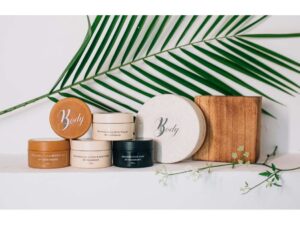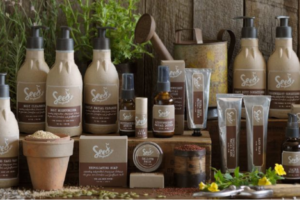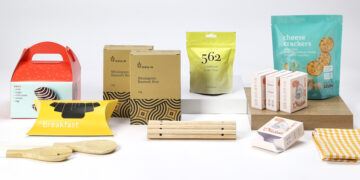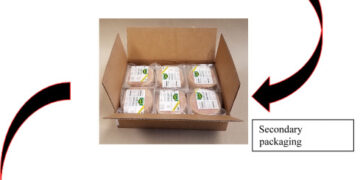Sustainable Packaging for the Beauty and Personal Care Industry
The beauty and personal care industry is one of the largest industries in the world, generating billions of dollars in revenue each year. However, with the increasing awareness of environmental issues, the industry is now facing a new set of challenges related to sustainable packaging. Sustainable packaging is not only better for the environment, but it also has the potential to increase brand loyalty and consumer trust. In this article, we will explore the challenges and opportunities of sustainable packaging for the beauty and personal care industry.
Challenges
One of the most significant challenges of sustainable packaging for the beauty and personal care industry is finding the right balance between functionality, aesthetics, and sustainability. Beauty and personal care products often require specific packaging materials to maintain their quality and effectiveness. For example, certain products require airtight packaging to prevent oxidation, while others may require UV protection to maintain their potency. Finding sustainable alternatives to traditional packaging materials that can meet these functional requirements can be a challenge.
Another challenge is the cost of sustainable packaging. Sustainable packaging materials are often more expensive than traditional materials, and this cost is ultimately passed on to the consumer. While some consumers are willing to pay a premium for sustainable packaging, others may not be willing or able to do so, which can be a barrier to adoption.

Additionally, the lack of infrastructure for sustainable packaging can pose a challenge. Many sustainable packaging materials are not widely available, and recycling facilities may not be equipped to handle them. This can lead to a lack of recycling options and an increase in waste.
Finally, the beauty and personal care industry is highly regulated, and any changes to packaging materials must meet regulatory requirements. This means that any new sustainable packaging materials must undergo rigorous testing to ensure their safety and efficacy.
Opportunities
Despite these challenges, there are significant opportunities for the beauty and personal care industry to adopt sustainable packaging. One of the most significant opportunities is increased consumer demand for sustainability. Many consumers are now prioritizing sustainability when making purchasing decisions, and brands that can meet these demands are likely to see increased brand loyalty and consumer trust.
Another opportunity is innovation. The development of new sustainable packaging materials and technologies presents an opportunity for brands to differentiate themselves and stay ahead of the competition. Brands that can be leaders in sustainability are likely to attract a broader customer base and increase loyalty among environmentally conscious consumers.
Sustainable packaging also presents an opportunity for cost savings in the long term. While sustainable packaging materials may be more expensive initially, they can ultimately reduce costs through increased efficiency in the supply chain, reduced waste, and lower costs associated with regulatory compliance.
Finally, sustainable packaging can help brands align with their corporate social responsibility goals. Many brands have made commitments to reduce their environmental impact, and sustainable packaging can be an essential part of that effort.

Examples of sustainable packaging in the beauty and personal care industry
Many brands in the beauty and personal care industry are already adopting sustainable packaging. Here are some examples:
Lush
Lush is a leader in sustainable packaging, with a commitment to using 100% recycled or biodegradable materials. The brand’s packaging is also designed to be reusable, with many products sold in reusable containers.
Aveda
Aveda uses 100% post-consumer recycled plastic for its packaging and is committed to reducing its carbon emissions by 100% by 2025.
Burt’s Bees
Burt’s Bees uses a combination of post-consumer recycled plastic and bio-based plastic made from sugarcane for its packaging.
L’Oreal
L’Oreal has committed to using 100% recycled plastic for its packaging by 2030 and has also developed a sustainable packaging assessment tool to help its brands evaluate the sustainability of their packaging
In order to successfully implement sustainable packaging, the beauty and personal care industry must work together to address the challenges and capitalize on the opportunities. Collaboration between brands, packaging suppliers, and recycling facilities is key to developing sustainable packaging solutions that meet functional requirements, are widely available, and can be effectively recycled.

In addition, education and awareness campaigns can help to increase consumer understanding of the importance of sustainable packaging and encourage them to make more sustainable purchasing decisions. Brands can also use their marketing and advertising campaigns to highlight their commitment to sustainability and the steps they are taking to reduce their environmental impact.
Finally, it is important to recognize that sustainable packaging is not a one-size-fits-all solution. Each brand must evaluate its unique needs and find sustainable packaging solutions that work for their products and supply chain. While it may take time and investment to transition to sustainable packaging, the long-term benefits for both the environment and the brand make it a worthwhile endeavour.
The beauty and personal care industry has a responsibility to address the environmental impact of its packaging, and sustainable packaging is an essential part of that effort. Brands that can successfully adopt sustainable packaging solutions that meet functional requirements, are cost-effective, and can be effectively recycled will be well-positioned to meet the increasing demand for sustainability and establish themselves as leaders in the industry.
Moreover, the shift towards sustainable packaging is not only necessary for the environment, but it can also have a positive impact on the brand’s bottom line. Sustainable packaging can reduce costs in the long term, increase efficiency in the supply chain, and improve the brand’s reputation and consumer trust.
Conclusion
Sustainable packaging presents both challenges and opportunities for the beauty and personal care industry. While finding the right balance between functionality, aesthetics, and sustainability can be a challenge, there are significant opportunities for brands that can meet the increasing demand for sustainability. Sustainable packaging can help brands differentiate themselves, increase brand loyalty and consumer trust, reduce costs, and align with their corporate social responsibility goals. As more brands adopt sustainable packaging, we can expect to see a positive impact on the environment and a shift towards a more sustainable future.
















